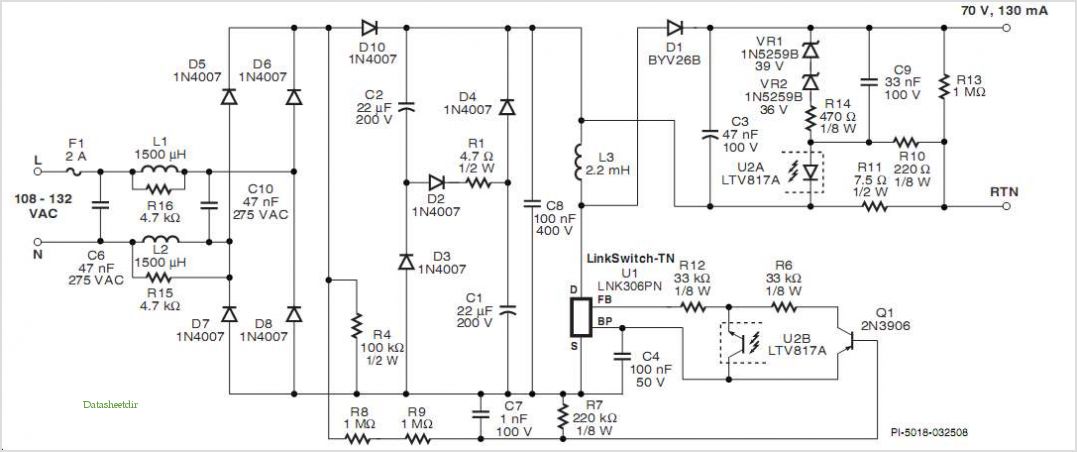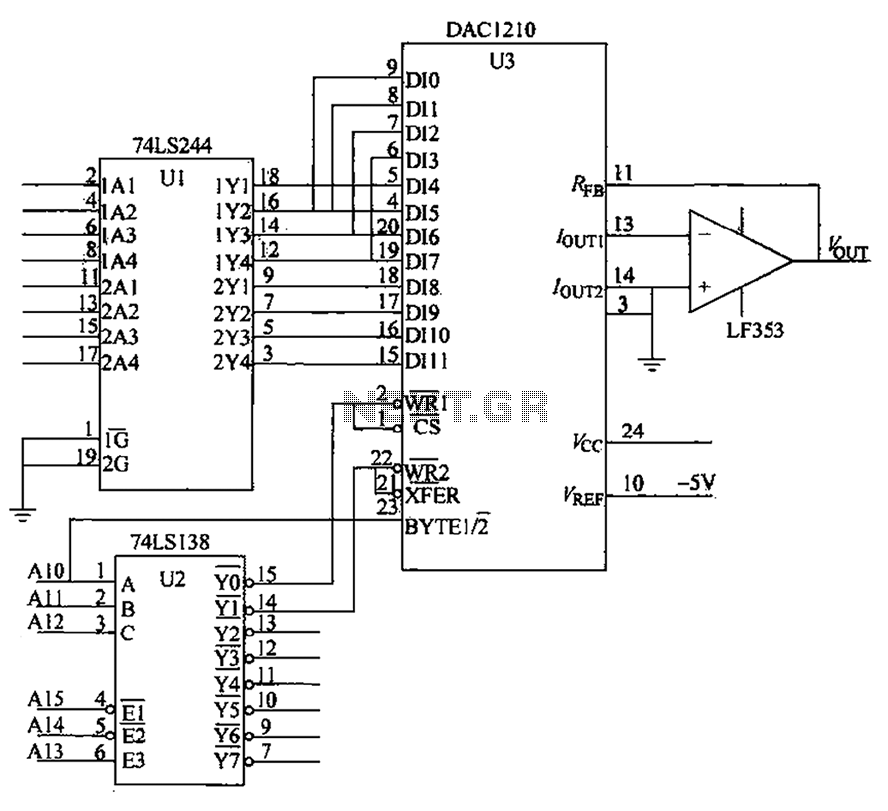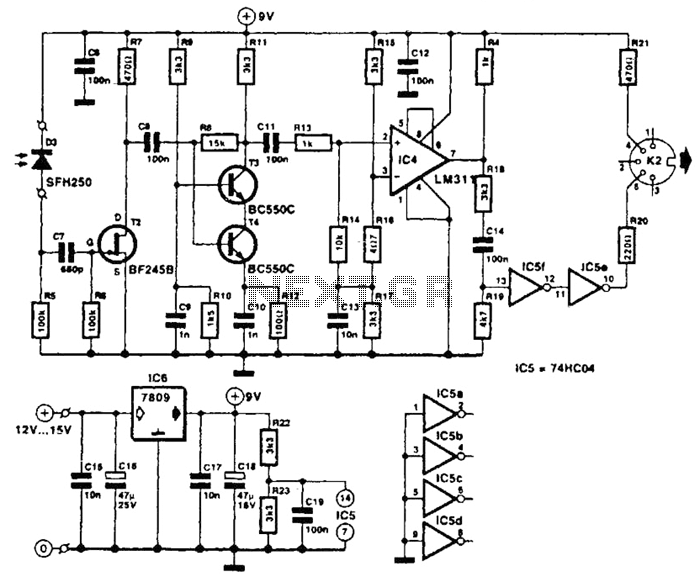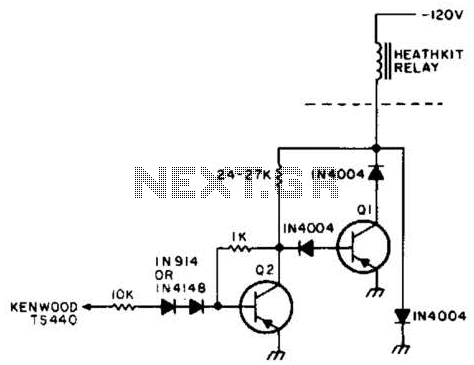
How to Interface 14-Segment using 8051 Microcontroller
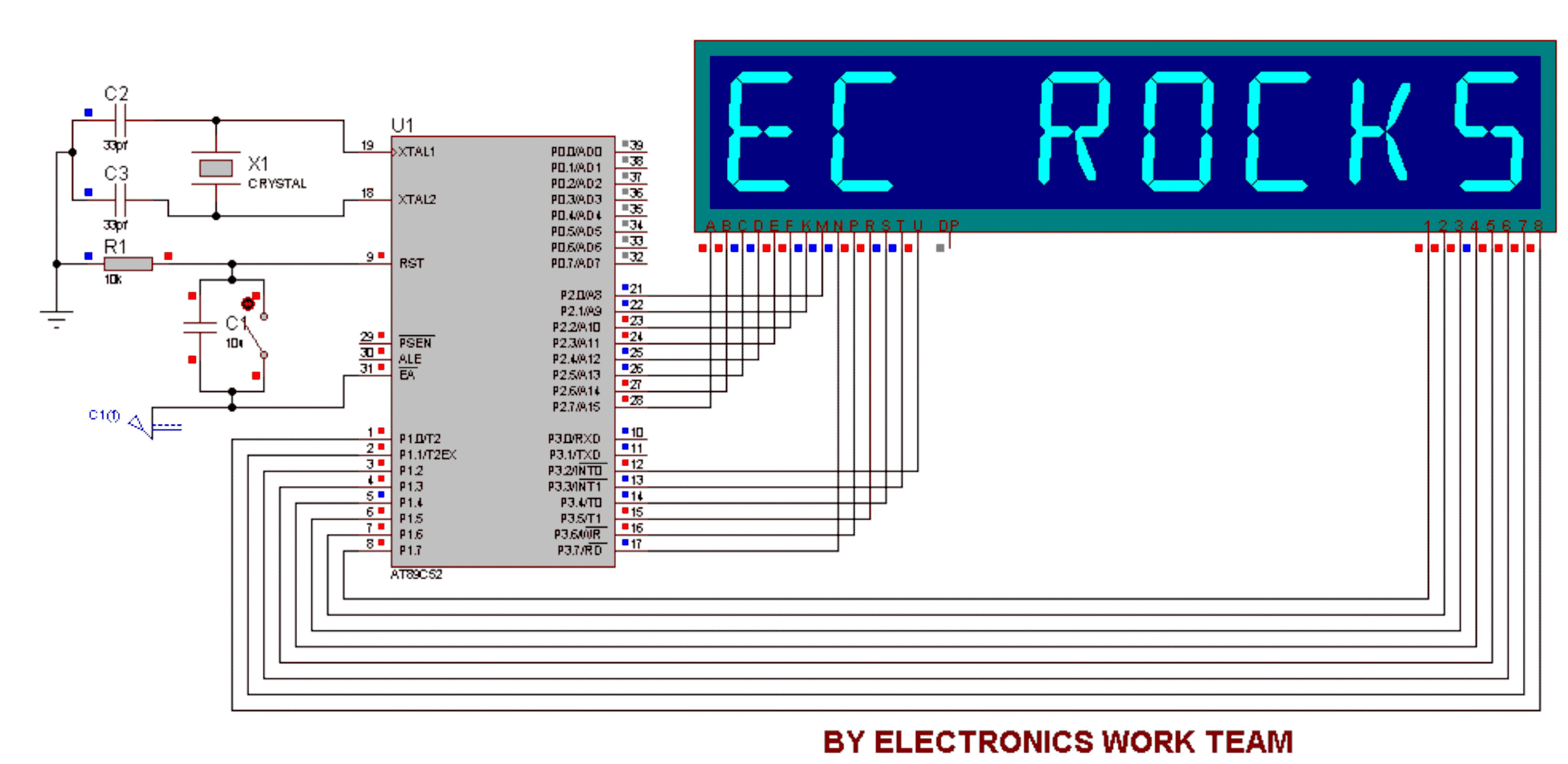
This circuit utilizes a 14-segment display to represent characters. The 14-segment display consists of 22 pins, which facilitate the display of various characters. Eight pins labeled A, B, C, D, E, F, K, and M are connected to the P2 port, while six pins labeled N, P, R, S, T, and U are connected to the P3 port. The remaining eight pins are connected to the P1 port.
The 14-segment display is a versatile electronic component used for visual representation of alphanumeric characters. Each of the 14 segments can be individually controlled to illuminate specific segments, thereby forming various characters and symbols. The display typically comprises seven horizontal and vertical segments, along with two additional segments for the decimal point and other functionalities, which allows it to represent digits, letters, and other symbols effectively.
In this circuit, the arrangement of pins is crucial for proper functionality. The connection of pins A through M to the P2 port enables the display of the basic alphanumeric characters. The P2 port is generally connected to a microcontroller or a microprocessor, which sends signals to activate the appropriate segments on the display. This allows for the dynamic representation of characters based on the data provided by the controlling device.
The P3 port, connected to pins N, P, R, S, T, and U, may serve additional functions such as controlling other features of the display or providing status indicators. This separation of connections allows for more organized control of the display, simplifying the design and implementation of the circuit.
The P1 port, connected to the remaining eight pins, may be utilized for power supply or as a ground reference, depending on the specific design requirements of the circuit. Proper grounding and power management are essential for ensuring the reliability and longevity of the display.
Overall, this circuit design effectively leverages the capabilities of the 14-segment display to provide clear and readable character representation, making it suitable for various applications in electronic devices, including digital clocks, calculators, and other user interfaces that require alphanumeric output.In this circuit we are using 14-segment to show characters. 14-segments have 22 pins, with the help of these pins we can write characters on 14 segment. 8 pins A,B,C,D,E,F,K,M are connected to P2 port, 6 pins N,P,R,S,T,U are connected with P3 port & 8 pins are connected with P1 port. 🔗 External reference
The 14-segment display is a versatile electronic component used for visual representation of alphanumeric characters. Each of the 14 segments can be individually controlled to illuminate specific segments, thereby forming various characters and symbols. The display typically comprises seven horizontal and vertical segments, along with two additional segments for the decimal point and other functionalities, which allows it to represent digits, letters, and other symbols effectively.
In this circuit, the arrangement of pins is crucial for proper functionality. The connection of pins A through M to the P2 port enables the display of the basic alphanumeric characters. The P2 port is generally connected to a microcontroller or a microprocessor, which sends signals to activate the appropriate segments on the display. This allows for the dynamic representation of characters based on the data provided by the controlling device.
The P3 port, connected to pins N, P, R, S, T, and U, may serve additional functions such as controlling other features of the display or providing status indicators. This separation of connections allows for more organized control of the display, simplifying the design and implementation of the circuit.
The P1 port, connected to the remaining eight pins, may be utilized for power supply or as a ground reference, depending on the specific design requirements of the circuit. Proper grounding and power management are essential for ensuring the reliability and longevity of the display.
Overall, this circuit design effectively leverages the capabilities of the 14-segment display to provide clear and readable character representation, making it suitable for various applications in electronic devices, including digital clocks, calculators, and other user interfaces that require alphanumeric output.In this circuit we are using 14-segment to show characters. 14-segments have 22 pins, with the help of these pins we can write characters on 14 segment. 8 pins A,B,C,D,E,F,K,M are connected to P2 port, 6 pins N,P,R,S,T,U are connected with P3 port & 8 pins are connected with P1 port. 🔗 External reference
